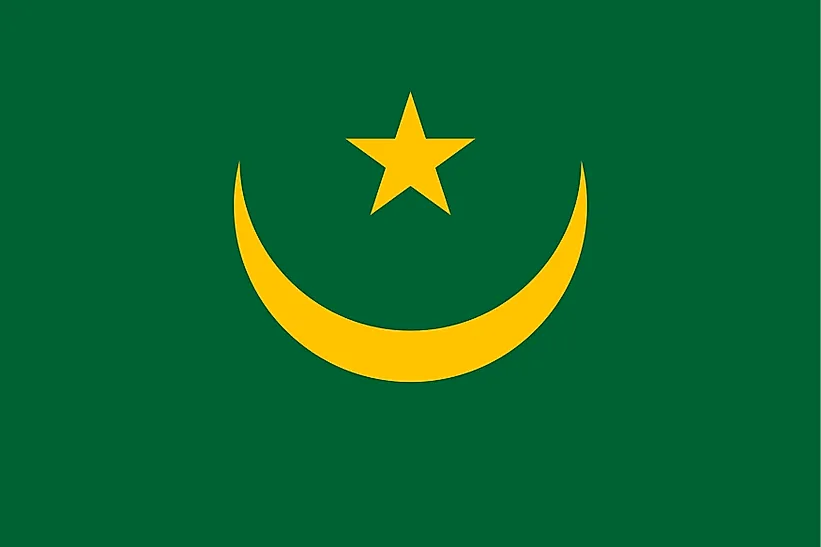
モーリタニア
| 大陸 | アフリカ |
| 資本金 | ヌアクショット |
| 人口 | 3,677,293 |
| GDP | $16.71 億ドル |
| 一人当たりGDP | $4,400 |
| ダイヤルコード | +222 |
| ISOコード(2文字) | MR |
| ISOコード(3文字) | MRT |
モーリタニアについて
砂漠と大西洋が出会う国、モーリタニアへようこそ。約103万平方キロメートルに約460万人の人口を擁するモーリタニアは、サハラ砂漠の遺産と沿岸の資源を併せ持ち、北アフリカとサブサハラ・アフリカの架け橋となっています。
地理的特徴と自然の美しさ
モーリタニアの地理は、北部と東部に広大なサハラ砂漠が広がり、南部はサヘリアのサバンナ地帯に移行する。古代のキャラバン都市が残るアドラール高原をはじめ、ドラマチックな砂漠の風景が広がり、全長754キロの大西洋岸もある。
移り変わる砂丘、岩だらけの台地、海岸沿いの湿地帯などの景観がある。変化に富んだ地形は、砂漠から海洋環境まで異なる生態系を生み出し、ユニークな生物多様性を支えている。
保護地域には、渡り鳥の生息地として重要なユネスコ世界遺産のバンク・ダルギン国立公園や、古代のオアシス都市ウアダネなどがある。同国の環境保護への取り組みは、砂漠と海洋の両方の生態系の保護に重点を置いている。
文化遺産と伝統
モーリタニアの文化は、アラブ系ベルベル人とアフリカ系の影響が融合したものです。モーリタニアには、古代の砂漠都市、伝統的な遊牧民の生活様式、独特の音楽伝統などの遺産がある。
伝統芸能には、詩、特にハッサニ詩、アルディーン(ハープ)やティディニット(リュート)を中心とした伝統音楽がある。この国の口承伝統は、何世代にもわたって歴史的知識や文化的価値を守り続けている。
モーリタニア料理は、砂漠と沿岸の両方の影響を反映しており、ティエブディエンヌ(魚と米の料理)やラクダ肉の専門料理などが特徴である。伝統的な茶道は、社会生活ともてなしの中心となっている。
歴史の旅
モーリタニアの歴史は、古代のサハラ砂漠横断交易路からさまざまな帝国を経て、1960年の独立に至る。モーリタニアの領土には、歴史的に重要な交易都市や文化の交差点がある。
重要な時代には、ガーナ帝国の影響、アルモラヴィッド朝、フランスの植民地化、独立後の発展が含まれる。主に遊牧民の社会から近代国家へと発展したこの国は、大きな適応を示している。
現代の経済状況
今日のモーリタニア経済は、漁業や鉱業といった伝統的な分野と新興産業が組み合わされている。モーリタニアには、海岸沿いに鉄鉱石や漁業資源が豊富に埋蔵されています。
最近のイニシアティブは、経済の多様化、インフラ整備、持続可能な資源管理に重点を置いている。モーリタニアの戦略的立地と天然資源は開発の機会を与えてくれる。
国際関係とグローバルポジション
モーリタニアは、マグレブとサハラ以南のアフリカの架け橋として、地域組織に積極的に参加している。テロ対策や地域の安定に尽力し、国際協力に貢献している。
ご存知でしたか?
- バンクダルギン国立公園には、世界最大級の渡り鳥が生息している?
- モーリタニアは世界で最後に奴隷制を廃止した国(1981年)?
- 古代都市チングエッティには、世界で最も重要な古代イスラム写本のコレクションがあるのですか?
- この国の "砂漠列車 "は、世界で最も長い列車のひとつで、全長2.5キロにも及ぶ。
結論
モーリタニアは、砂漠の遺産と海洋資源が融合したユニークな国です。古代のキャラバン都市から近代的な漁業まで、伝統的な遊牧民文化から発展への願望まで、モーリタニアは独自のアイデンティティを守りながら進化し続けています。モーリタニアは、環境保護や経済開発などの課題に取り組みながら、文化の架け橋としての役割を果たすと同時に、持続可能な成長を目指しています。





